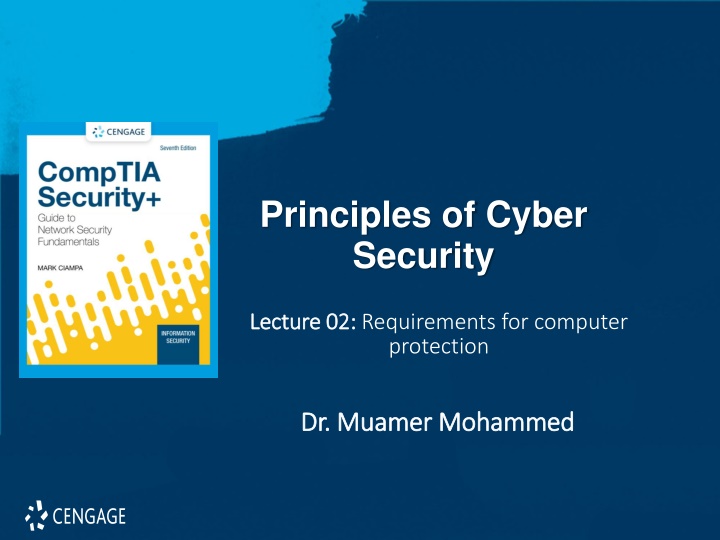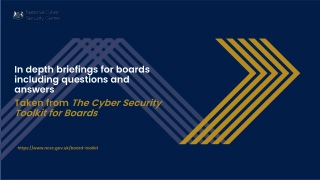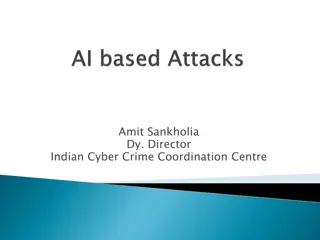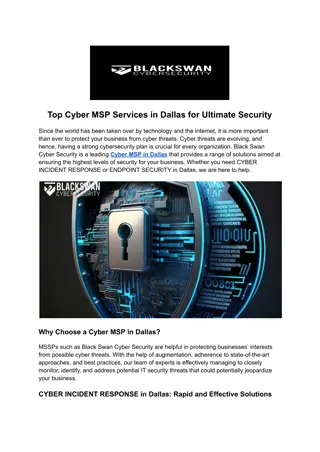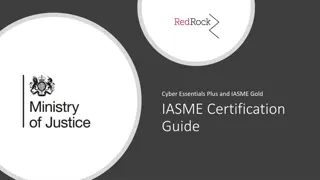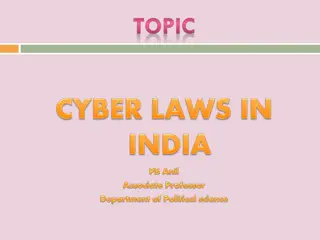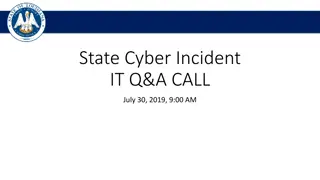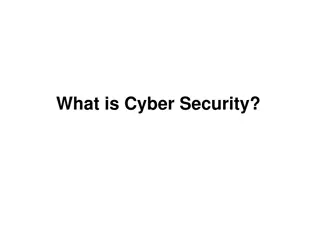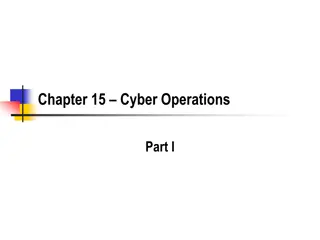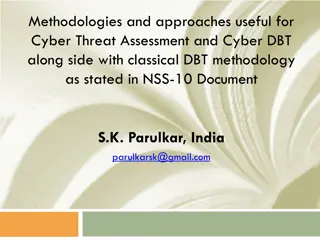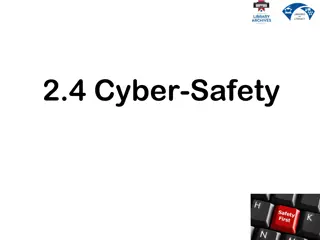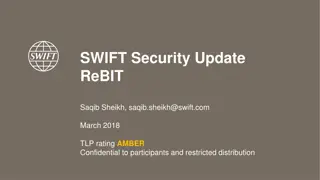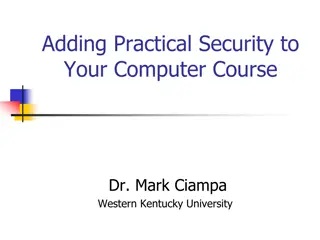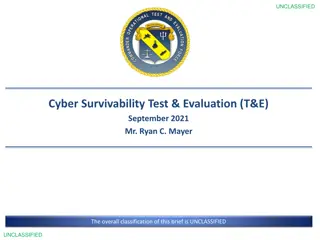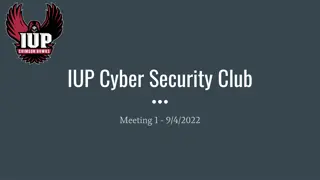Requirements for Computer Protection - Cyber Security Basics
Learn about the common attackers in cyberspace, the fundamental defense principles, and the importance of information security. Explore how to defend against attacks using layering, limiting access, diversity, obscurity, and simplicity."
Download Presentation

Please find below an Image/Link to download the presentation.
The content on the website is provided AS IS for your information and personal use only. It may not be sold, licensed, or shared on other websites without obtaining consent from the author.If you encounter any issues during the download, it is possible that the publisher has removed the file from their server.
You are allowed to download the files provided on this website for personal or commercial use, subject to the condition that they are used lawfully. All files are the property of their respective owners.
The content on the website is provided AS IS for your information and personal use only. It may not be sold, licensed, or shared on other websites without obtaining consent from the author.
E N D
Presentation Transcript
Principles of Cyber Security Lecture Lecture 02 02: : Requirements for computer protection Dr. Dr. Muamer Muamer Mohammed Mohammed 1
Objectives 2.1 Identify the types of attackers that are common today 2.2 Describe the five basic principles of defense
Understanding the Importance of Information Security Information security can be helpful in: Preventing data theft Thwarting identity theft Avoiding the legal consequences of not securing information Maintaining productivity Foiling cyberterrorism 3
Who Are the Threat Actors? Threat actor: a generic term used to describe individuals who launch attacks against other users and their computers Most have a goal of financial gain 4
Script Kiddies Figure 2-1: Skills needed for creating attack 5
Insiders Employees, contractors, and business partners Over 58 percent of breaches attributed to insiders Examples of insider attacks: Health care worker may publicize celebrities health records. Stock trader might conceal losses through fake transactions. Employees may be bribed or coerced into stealing data before moving to a new job. 6
Defending Against Attacks Five fundamental security principles for defenses: Layering Limiting Diversity Obscurity Simplicity 7
Layering Information security must be created in layers. A single defense mechanism may be easy to circumvent 8
Limiting Limiting access to information: Reduces the threat against it Only those who must use data should be granted access Should be limited to only what they need to do their job 9
Diversity Closely related to layering Layers must be different (diverse) If attackers penetrate one layer: Same techniques will be unsuccessful in breaking through other layers 10
Obscurity Obscuring inside details to outsiders. Example: not revealing details. Type of computer. Operating system version. Brand of software used. Difficult for attacker to devise attack if system details are unknown. 11
Simplicity Nature of information security is complex Complex security systems: Can be difficult to understand and troubleshoot A secure system should be simple from the inside But complex from the outside 12
Chapter Summary Main goals of information security Prevent data theft Thwart identity theft Avoid legal consequences of not securing information Maintain productivity Foil cyberterrorism Threat actors fall into several categories and exhibit different attributes Although multiple defenses may be necessary to withstand the steps of an attack, these defenses should be based on five security principles: Layering, limiting, diversity, obscurity, and simplicity 13
Thank you 14
